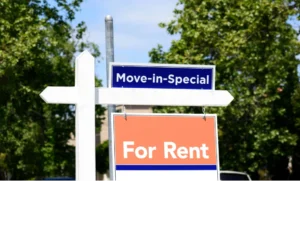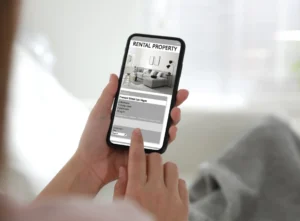The Current State Of Property Management Software
 The first property management software systems emerged in the early 1980s. Like just about all software at that time, these solutions were local only. This means that you purchased the software (likely on a floppy disk, sold in a box from a store) and installed it on one computer or one network. For large landlords and property managers with complex back offices, the feature set was revelatory, enabling them to better track lease details, amounts owed, work orders and to streamline their business processes.
The first property management software systems emerged in the early 1980s. Like just about all software at that time, these solutions were local only. This means that you purchased the software (likely on a floppy disk, sold in a box from a store) and installed it on one computer or one network. For large landlords and property managers with complex back offices, the feature set was revelatory, enabling them to better track lease details, amounts owed, work orders and to streamline their business processes.
But for small and medium sized landlords, these tools were out of reach. They proved to be some combination of too expensive and too difficult to use (indeed, many required or still require formal training simply to operate them).
A lot has changed in the last forty years. In the 90s and early 2000s, property management software moved online. This change meant it became more accessible and more functionally valuable. By the 2010s, specific providers started catering their product to independent landlords and real estate investors. Today, regardless of your business size or portfolio type, there is a property management software platform that will dramatically improve your life.
A Tale of Two Markets
Property management software is predominantly divided into two groups:
- Legacy Providers that have been around for 15+ years
- Newer Upstarts that have emerged more recently
Legacy Providers include companies like Yardi, Appfolio, and even Buildium. These programs and the companies that run them tend to target larger landlords and property managers. This makes a great deal of sense given that, at the time of their founding, it was extremely expensive to acquire a new client. Because of this, it didn’t make a lot of economic sense to go after small portfolios that would be worth far less.
Their entire value structure is thus built around servicing this large-landlord market. The larger your business, the more decision inertia you have. Once a five-thousand unit landlord decides to use Yardi Voyager, they’re unlikely to change their mind. They also tend to be more committed to that decision in the resources they’ll throw at it. At property management companies like these, you may find employees whose sole responsibility is to understand and manage the chosen property management software. As a result, these providers tend to be packed with features – like fleet and payroll management – but those features tend to be a bit more challenging to learn and use.
Newer Upstarts, in contrast, leverage the modern purchasing life-cycle. In 2021, even one-unit landlords recognize the value of software and believe there may be something that can help them. Because of this, small-to-mid-sized landlords are more proactive in their search for a potential solution than ever before. As a result, the cost to acquire a customer has dropped dramatically, allowing Newer Upstarts to approach property management software with a completely different value structure. You can think of companies like Cozy, SparkRental, Tenant Cloud, and Innago. These platforms focus on a clean, simple experience with tools tailored to independent landlords and managers. This means that they are generally easier to use, but, while they are still feature-rich, tend to lack some of the features a large portfolio may be interested in.
The Emergence of “Free”
Larger landlords tend to be less cost sensitive. Spending hundreds or even thousands of dollars a month for software hurts quite a bit less if your revenue is on the order of hundreds of thousands of dollars. Because of this, Legacy Providers have historically felt more comfortable with aggressive pricing models charged to the property owner themselves.
As previously mentioned, the value structure for Newer Upstarts is dramatically different. This resulted in wholly different solutions, layouts, and usability almost as soon as they appeared in the market; however, the initial pricing models remained quite similar to those of the Legacy Providers. There were some modifications like the removal of minimum unit counts or minimum monthly fees, but pricing structures were predominantly based on tried-and-true monthly charges. You can see this reflected in platforms like Tenant Cloud that offer fairly traditional tiered pricing plans.
In more recent years, some Newer Upstarts have settled on a pricing model as aggressively disruptive as their value proposition: free. Cozy and Innago are two of the most commonly referenced in this space, choosing to monetize tenants in specific value added ways rather than charge landlords up-front or even monthly fees.
Conclusion
All-in-all, property management software has become significantly less expensive and more attainable for landlords of any size. And with free options available, the prevailing thought is that there is little preventing a landlord or property manager from adopting one of these newer solutions.













 Accessibility
Accessibility